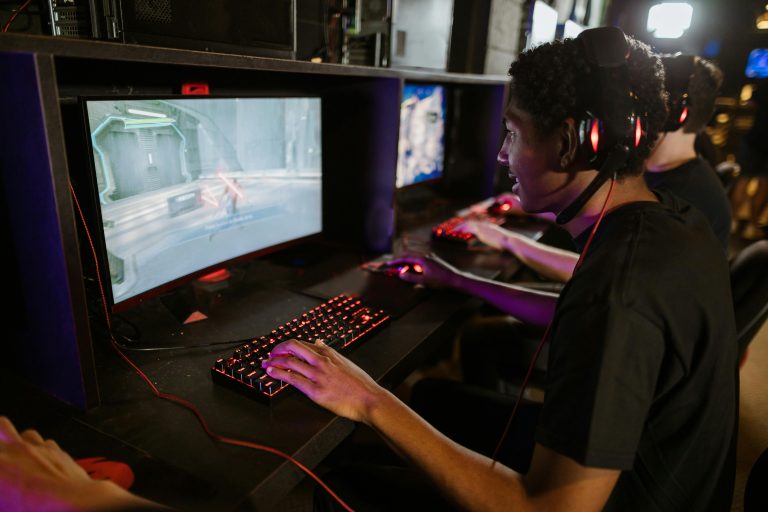![Why Is Everyone Talking About [Celebrity/Event of the Month]? The Viral Moment Explained](https://surlty.com/wp-content/uploads/2025/08/pexels-photo-16927334-1024x1024.jpeg)
It seems you can’t open a social media app, turn on the news, or have a casual conversation without the name [Celebrity/Event of the Month] popping up. From trending hashtags and memes to heated debates and think-pieces, this moment has captured the global zeitgeist with a force few could have predicted. But if you’ve been slightly out of the loop, you might be asking yourself: what exactly happened, and why has it sparked such an intense, widespread reaction? The phenomenon isn’t just about a single incident; it’s a perfect storm of cultural timing, social media mechanics, and public sentiment that has propelled [Celebrity/Event of the Month] into the stratosphere of viral fame. Let’s break down the key ingredients that turned this into the conversation you simply cannot escape.
The Spark: What Actually Happened?
Every viral fire needs a spark. For [Celebrity/Event of the Month], it began with a specific, highly shareable moment. Perhaps it was a controversial acceptance speech at a major awards show, a surprising fashion choice on a red carpet, a leaked video that revealed an unexpected truth, or a public feud that erupted into open warfare on X (formerly Twitter). This initial incident was perfectly packaged for the digital age—it was visual, emotionally charged, and instantly debatable.
Within minutes, clips, screenshots, and quotes were ripped from their original context and spread across every platform. TikTok edits offered dramatic slo-mo replays set to trending audio. Instagram stories were flooded with hot takes and reaction memes. X became a real-time courtroom where millions served as judge and jury. This rapid, multi-platform dissemination ensured that the story wasn’t just reported—it was experienced, participated in, and collectively shaped by the audience itself, making everyone feel personally invested in the outcome.
The Power of Polarization: Why People Can’t Stop Talking
If the initial moment was the spark, polarization was the gasoline. The true hallmark of a lasting viral story is its ability to split public opinion directly down the middle. [Celebrity/Event of the Month] wasn’t a universally agreed-upon event; it was a Rorschach test that revealed people’s deeper beliefs about fame, morality, art, or society.
On one side, you have the fervent supporters, arguing that the celebrity’s actions were justified, brave, or long overdue. On the other, staunch critics condemn the behavior as entitled, problematic, or disrespectful. This binary clash is catnip for algorithms. Engagement—through likes, shares, and, most importantly, lengthy comment threads—is the currency of social media, and nothing drives engagement like a good old-fashioned argument. The event stopped being about the event itself and started being about what it represented, allowing it to transcend celebrity gossip and tap into larger cultural conversations about power, cancel culture, and public perception.
The Memeification and Community Reaction
No viral moment is complete without its comedic counterpart. As the serious debates raged on, the internet’s meme factories shifted into high gear. The moment involving [Celebrity/Event of the Month] was quickly remixed, parodied, and turned into a universal symbol for everything from minor inconveniences to major life betrayals.
This memeification is a crucial part of the lifecycle. It does two things: it makes the event accessible to those who might not care about the serious implications, and it extends its shelf life exponentially. A well-made meme can travel further and faster than any news article. Furthermore, community reactions from other celebrities and influencers added fuel to the fire. A single comment from a fellow A-lister could spawn a dozen new headlines and redirect the narrative, creating endless sub-plots and ensuring the story remained dynamic and ever-evolving rather than fizzling out after a 24-hour news cycle.
The Bigger Picture: What This Moment Says About Our Culture
To dismiss the chatter around [Celebrity/Event of the Month] as mere gossip is to miss the point entirely. Its resonance is rooted in its reflection of our current cultural landscape. In an era defined by curated social media personas, this event felt startlingly authentic—a raw, unscripted crack in the glossy facade of celebrity.
It also speaks to our collective desire for narrative and drama. The public has always been fascinated by the rise and fall of icons, and this event provided a modern-day chapter in that timeless story. It allowed people to choose a side, to be part of a community, and to engage in a shared experience that felt larger than themselves. In a fragmented digital world, these moments of collective focus are increasingly rare and powerful, giving us a common reference point and something to talk about.
Where Do We Go From Here?
The question on everyone’s mind now is: what’s next? The court of public opinion is fickle, and today’s villain can be tomorrow’s hero (and vice versa). The long-term impact on the career of [Celebrity/Event of the Month] remains to be seen. Will this moment be a career-ending scandal, a temporary blip, or a strategic rebranding that ultimately elevates their status? The answer depends on the court of public opinion and how the story continues to be managed and manipulated in the weeks to come.
One thing is certain: the conversation is far from over. As new details emerge and the narrative twists and turns, the world will be watching, waiting, and most importantly, talking. The viral moment of [Celebrity/Event of the Month] is more than just tabloid fodder; it’s a case study in modern fame, a mirror held up to our online behavior, and a testament to the unprecedented power of a connected global audience to build up and tear down its idols at lightning speed.






